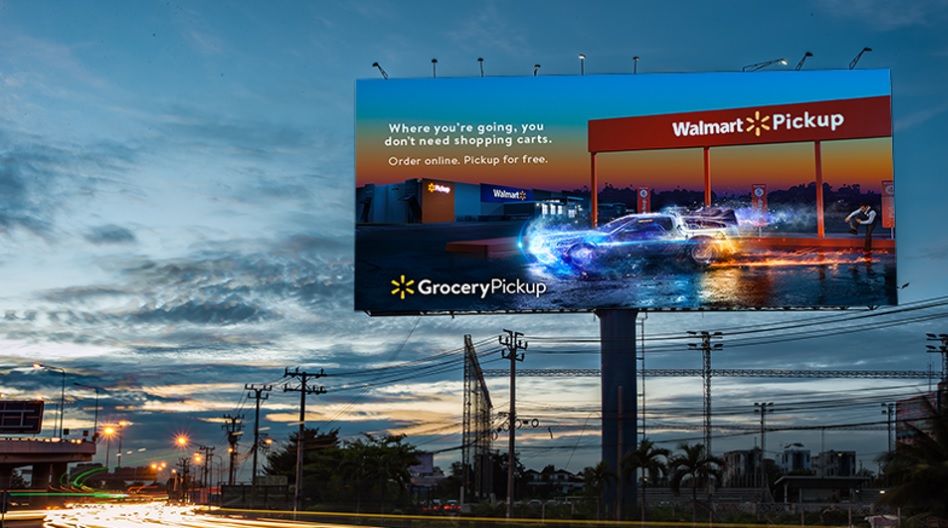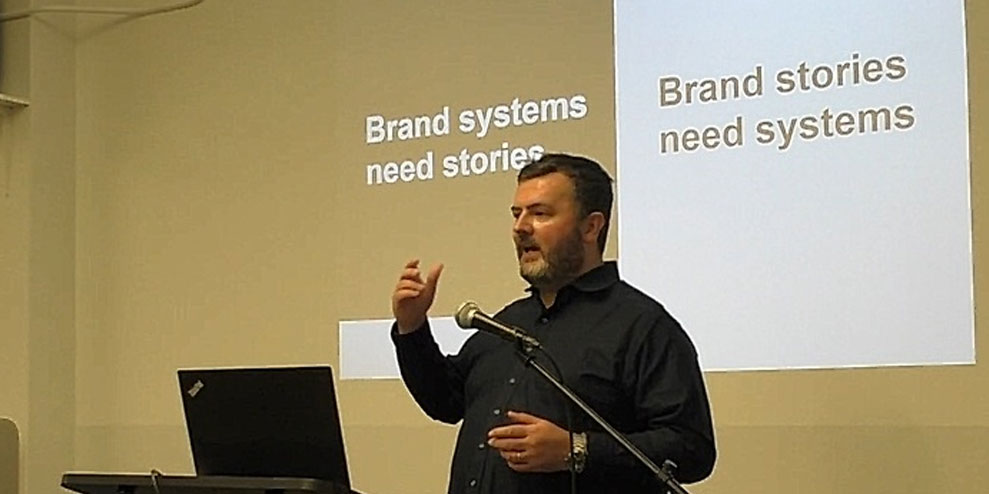Customer experience is now a vital consideration for strategists. Stephen Whiteside, WARC’s managing editor/reports and news, learned that mastering this discipline requires a fresh understanding of consumers, brand building, and marketing ethics.
As chief strategy officer of agency R/GA, Tom Morton works with big-name clients like Samsung, Nike, Google and ESPN.
Whatever the brand or category, he believes, it is now imperative to craft end-to-end customer experiences – from browsing in a digital or physical store to delivering post-sales service via calls centers or chatbots.
Achieving a favorable interaction at every stage of the customer journey requires a nuanced experience strategy that is based on meaningful innovation, activating user data, and constructing an ecosystem that has members, not customers.
Speaking at a strategy-focused event held by WARC in New York, Morton outlined four considerations for marketers that want to be leaders the in the customer experience space:
1) Experiences build mega-brands
“It is experiences that are the driving force behind brands today,” Morton explained.
And he offered a profound point of evidence to support this claim by looking at Amazon, Apple, and Microsoft – the only companies to have been valued at over $1 trillion by the stock market.
What do these firms have in common? “All of them are essentially ecosystems,” Morton said. “The vast majority of the most valuable companies in the world are those that have been built on a system.”
Other forward-looking enterprises are adopting an equivalent model, too. An example: Disney, which has launched a video-streaming platform to supplement its existing range of entertainment assets, from movie studios to TV networks and theme parks. Nike, the sporting-goods manufacturer, is also blending digital assets – like the SNKRs app for “sneakerheads” – with its physical products in compelling ways.
Drilling down into this topic, Morton identified the traits characterizing “system” brands, as they:
- “come to life in their interface and their innovation”;
- turn “user data into services”;
- have “the ultimate goal of turning their customers into members.”
While the leading “system” brands deliver powerful utility, Morton suggested, they also possess a clear purpose, narrative and story. “The truth is for these brands that purpose, that narrative, is really baked into the experience.
“They are ‘doing’ rather than ‘telling’ their story in that respect.”
2) Experience strategists as brand guardians
If experiences are central to brand connectivity – from logging in to apps to navigating websites – this has clear implications for strategists.
“The people who develop those experiences are now, for good or bad, in the role of brand guardians,” Morton said.
Such a notion upends the established role of strategy, which traditionally aimed to “build the brand story”. That remains a critical task, but now has a complementary step: reflecting a brand’s principles via every consumer touchpoint and mode of engagement.
“The expanded role … is you are building the brand story, and you’re building the brand system – and one is feeding the other, and you’re learning from both,” Morton said.
“What this is going to mean … is that you’re going to have to accept that you’re doing both of these things, and you’re doing both of them in roughly equal measure.”
Fusing these responsibilities, he proposed, takes precedence over the false dichotomy that is frequently heard between storytelling, on the one hand, and the rigid emphasis on tactics and performance marketing, as championed in Silicon Valley, on the other.
“If you are experience strategists, guess what?” Morton said. “Like it or not, you are now in charge of the brand and what that brand stands for.”
3) Using the brand lens
If experience strategists are brand guardians, they will have to expand on playbooks that have typically been premised around user experience and human-centered design.
These principles are extremely valuable, Morton asserted. “But the catch is that can also be like a wind tunnel for a brand. Because if that’s the only path you follow, then you might end up making something that is frictionless, and very useful, and completely indistinguishable from the competition,” he warned.
Zeroing in on current users is the source of a further problem, too: “If you’re designing only for the person who’s already using, and right in front of the brand, you might not be doing anything to attract the new user you need to bring in to actually grow the brand.”
User-experience specialists, said Morton, usually ask standard questions when designing a service:
- “Is it desirable? Do the users want it?”
- “Is it feasible? Can it be done technologically?”
- “Is it viable as well? Is there a business in this?”
He suggested that two more “lenses” be appended to this list to make sure that experience strategists are not at risk of ending up with commoditized, undifferentiated offerings:
- The cultural lens: “Will this thing be meaningful? Will it travel? Will it be relevant?”
- The brand lens: “Will this be authentic to the brand that’s providing it?”
“Once you put those extra lenses in when designing an experience, you actually end up making things that are much richer, much more meaningful, and much more effective,” Morton said.
An example came from Nike’s Air Jordan line. To mark the 30th anniversary of Michael Jordan’s iconic leap in the 1988 Slam Dunk Contest – as immortalized in the brand’s logo – it brought the basketball legend back to the court using an augmented reality experience on Snapchat’s messaging app. Users could also purchase the new Air Jordan III sneakers through this channel.
Recreating the story of Jordan’s famous dunk and providing a novel, user-friendly commerce opportunity led to the sneakers selling out in 23 minutes. “Experience builds brands – and a little bit of extra brand narative can make all the difference,” Morton said.
Another case in point involves Walmart, the retailer with the brand proposition of enabling shoppers to “Save money, live better.” If the chain’s low prices are well-known, improving the daily lives of its customers extends beyond domestic finances. How? By cutting down the hours and minutes they have to invest in the weekly shop, stock-up trips, or picking up a much-needed recipe ingredient.
“Living better so often means making the best use of your time,” Morton said.
From pick-up towers in its stores to trialing home delivery and introducing a digital payments service, the retailer has unveiled experiences that “deeply carry the Walmart brand, that deeply carry the ethos of ‘Save money, live better,’” Morton said.
The Bentonville, Arkansas-based company even backed its grocery pickup with a high-profile ad campaign that used storytelling to promote this experience:

“Brand systems need stories that … give them some color, some culture, some authenticity, some recognition,” Morton said. “And, also, brand stories need systems; they need to play out in ways that are going to reach people.”
4) Ethics
Mobile phones are often the venue for reaching people.
And these devices, Morton said, exemplify the complex decisions that face experience strategists, as they are:
- private, and contain huge amounts of personal data, while simultaneously connecting users to public forums, like social media;
- commercial, as a business channel, while allowing people to engage in civic activities;
- trivial, as consumers can play games and scroll through light-hearted content, and serious, such as by letting individuals monitor their health;
- disposable, in the sense of being easy to discard or trade up, while being addictive in many ways.
Brand experiences must strike the correct balance on each of these dimensions. And that means ethics should be at the center of experiential strategies. “The services that we are being asked to design are being put into extremely morally ambivalent places,” Morton said.
This means the modern generation of strategists can use technology for positive or negative reasons. Assisting someone in eating healthy foods and exercising is one option. “Or you can develop gambling services that no one ever leaves. Or you can do a Cambridge Analytica, and develop a highly sinister political campaign,” Morton said.
These choices are ethical in nature and scope, and require asking questions such as:
- “Are we building something around worst intentions or are we building it for someone’s best self?”
- “Are we exploiting the user or are we respecting the user?”
- “Are we thwarting a goal or are we helping people achieve a goal?”
- “Does this product have good intentions? Is it designed to make people thrive? Or is it designed to exploit them and play on their worst selves?”
“This isn’t like a grandiose thing that experience strategists are going to experience in the abstract,” said Morton. “Everyday, you are going to counter these little moral forks.”
In choosing the right or wrong course, experience strategists can exert a colossal influence on society at large. “These are choices that a lot of brand owners don’t know how to make, a lot of the platforms are trying to stop us from making, and a lot of politicians haven’t got around to working out how to regulate or answer,” Morton said.
“The truth is, if you are in experience strategy, you’re actually going to have a much bigger challenge to impact the world just by making some ethical choices about how you design products.”
–
This article first appeared in www.warc.com
Seeking to build and grow your brand using the force of consumer insight, strategic foresight, creative disruption and technology prowess? Talk to us at +9714 3867728 or mail: info@groupisd.com or visit www.groupisd.com


